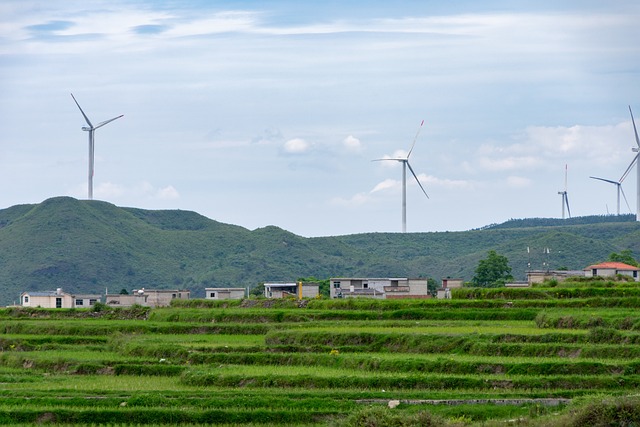Navigating the Sustainable Energy Landscape: Tips for Savvy Investors
The global shift toward sustainable energy has accelerated dramatically, driven by the urgent need to combat climate change and the growing demand for clean, renewable sources of power. For savvy investors, this transition presents a myriad of opportunities within a diverse and rapidly evolving market. However, investing in sustainable energy can be complex, requiring a comprehensive understanding of the landscape, technologies, and financial mechanisms at play. In this article, we will explore essential tips that can guide investors through the intricate world of sustainable energy.
Understanding the Sustainable Energy Spectrum
Sustainable energy encompasses a variety of technologies and solutions, including wind, solar, hydropower, geothermal, and bioenergy. Each of these sectors has unique characteristics, market dynamics, and levels of maturity. To navigate the landscape effectively, investors should gain familiarity with key areas within the sustainable energy spectrum.
Wind and solar energy have emerged as the dominant players in the renewable energy market. Advances in technology have significantly reduced costs, making these options more accessible. Other sectors, such as geothermal energy, remain less developed but hold substantial potential for long-term growth. Understanding the technological advancements and regulatory frameworks that influence these industries can give investors a competitive edge.
Researching Market Trends and Demand Drivers
Staying informed about market trends and demand drivers is crucial for making smart investment decisions. Factors such as government policies, technological advancements, and evolving consumer preferences can influence the profitability of various energy sectors.
Government regulations play a pivotal role in shaping the energy landscape. Many countries are implementing policies to incentivize renewable energy use, including tax credits, subsidies, and renewable portfolio standards. Investors should closely monitor these regulations, as they can significantly impact market dynamics and determine the long-term viability of specific energy sources.
In addition to government incentives, consumer demand for sustainable energy solutions is on the rise. As individuals and businesses prioritize environmental responsibility, there is a growing market for energy-efficient technologies and practices. Monitoring shifts in consumer sentiment and preference can unveil valuable investment opportunities in emerging sectors, such as electric vehicles and energy storage systems.
Evaluating Investment Vehicles
Investors in the sustainable energy landscape have a variety of investment vehicles at their disposal. Understanding the strengths and weaknesses of each option can help inform investment strategies.
One popular avenue for investment is through publicly traded companies involved in renewable energy production. Major solar and wind energy firms, alongside manufacturers of related technologies, present opportunities for capital appreciation. Investing in stocks enables investors to benefit from market fluctuations but comes with inherent risks, including volatility and reliance on broader market trends.
Another approach is to consider exchange-traded funds (ETFs) that concentrate on sustainable energy and related industries. These funds typically hold a diverse portfolio of stocks, reducing individual company risk while providing exposure to the growth of the renewable energy sector. Importantly, analyzing the fund’s expense ratio and historical performance can inform its potential return on investment.
For those seeking to make a direct impact, private investments in renewable energy projects can provide attractive opportunities. These investments often involve funding specific projects such as solar farms or wind installations. While they may require higher capital and come with longer investment horizons, they can yield substantial rewards and contribute to sustainable development goals.
Assessing Risk and Diversification
As with any investment, the renewable energy sector comes with inherent risks. Market volatility, technological uncertainty, and regulatory changes can all impact returns. To mitigate these risks, diversification is key.
Diversifying a sustainable energy portfolio may involve investing across various energy sectors, geographies, or asset classes. For instance, an investor might hold a mix of solar and wind companies, alongside energy storage and electric vehicle manufacturers. This approach can smooth out performance and reduce exposure to any single area’s potential downturn.
Additionally, considering the broader energy landscape can provide insights into complementary investments. For example, pairing renewable energy investments with traditional energy sectors transitioning toward sustainability can balance potential risks and rewards.
Staying Informed About Technological Innovations
The sustainable energy space is characterized by rapid technological advancements. Innovative breakthroughs can disrupt existing paradigms and create new investment opportunities. Staying informed about new developments can position investors to capitalize on emerging trends.
Important areas of focus include energy storage technology, which is critical for integrating renewable energy sources into the grid. As storage solutions become more efficient and cost-effective, they will play a vital role in the broader adoption of renewable energy. Understanding developments in this field can offer insight into potential investment opportunities in energy storage firms.
Moreover, electric vehicles (EVs) represent a transformative trend within transportation that directly affects energy consumption patterns. With the shift away from fossil fuels, investments that support EV infrastructure, such as charging stations and battery technologies, can be particularly lucrative.
Engaging with Socially Responsible Investing (SRI) Principles
For many investors, aligning investments with personal values is essential. Socially Responsible Investing (SRI) integrates ethical considerations into financial decision-making, focusing on investments that promote social and environmental benefits. Investors interested in sustainable energy may find SRI principles particularly relevant as they seek to invest in companies that align with their values.
Numerous funds and ETFs specifically target companies that adhere to sustainable practices, thus encouraging responsible corporate behavior. Engaging in this aspect can enhance not only an investor’s portfolio but also their sense of contribution to the global sustainability movement.
Networking and Industry Engagement
Staying connected with industry professionals, attending conferences, and participating in forums can provide invaluable insights into the sustainable energy landscape. Networking allows investors to share knowledge, gain different perspectives, and refine their investment strategies.
Engagement with sustainable energy organizations and think tanks can offer access to cutting-edge research and information about emerging trends. Additionally, collaborating with other investors can yield practical insights into portfolio management, risk assessment, and investment opportunities.
Conclusion: A Path Forward in Sustainable Energy Investment
As the world transitions toward cleaner sources of energy, savvy investors have a unique opportunity to capitalize on this transformation. By understanding the sustainable energy landscape, remaining informed about market trends, evaluating various investment vehicles, assessing risks, and engaging with industry networks, investors can make astute decisions that align financial goals with sustainability objectives.
Ultimately, navigating the sustainable energy landscape requires a proactive approach, continuous learning, and a willingness to embrace change. By fostering a forward-thinking mindset and staying attuned to developments within the sector, investors can contribute to a more sustainable future while achieving meaningful returns on their investments.


